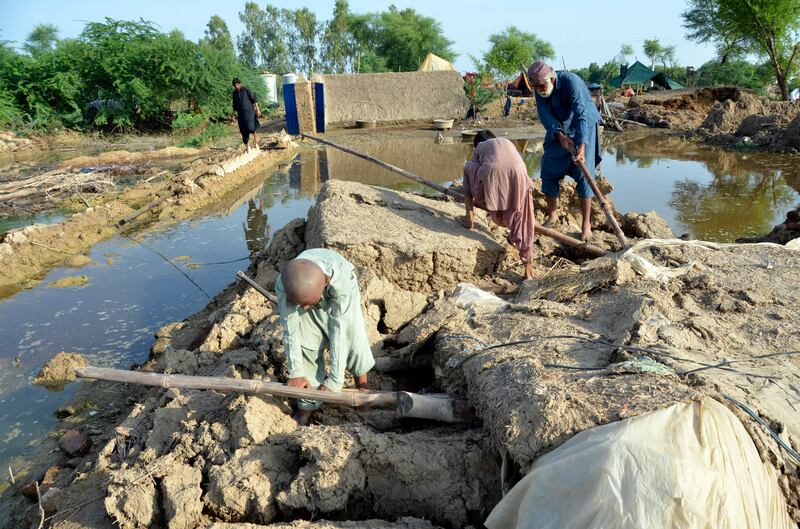One year after catastrophic flooding in Pakistan, an estimated 4 million children continue to need humanitarian assistance and access to essential services.
The 2022 floods submerged one-third of the country and affected 33 million people, half of whom were children, reports UNICEF. The floods were so powerful that they caused some rivers to change course. Vital infrastructure was damaged or destroyed, including over 2 million homes, 439 bridges, more than 4 million acres of agricultural land, over a million livestock animals, 30,000 schools, 2,000 health facilities and over 4,000 water systems.
Without access to clean water, people drank contaminated water from rivers and wells. Health care teams began seeing thousands of patients with diseases like dengue, malaria, acute diarrhea, cholera and skin infections.
The human toll
Twelve months later, an estimated 8 million people, 4 million of whom are children, are still without essential services. Now, this year’s monsoon rains are making a difficult situation even harder. Some 100,000 people had to be evacuated from their homes on Sunday when the Sutleg River burst its banks and flooded several hundred villages.
“Vulnerable children living in flood-affected areas have endured a horrific year,” said Abdullah Fadil, a UNICEF representative in Pakistan. “They lost their loved ones, their homes and schools. As the monsoon rains return, the fear of another climate disaster looms large. Recovery efforts continue, but many remain unreached, and the children of Pakistan risk being forgotten.”
UNICEF shares a story of Kamli, a widow with seven children who lost her home in the floods. The home has been rebuilt, but her livelihood of picking cotton is gone, as the fields were destroyed.
‘’We live with fear in our bodies, with the anxiety of not knowing when the next disaster will be,” Kamli says under the watchful eyes of her daughters. “This is the only land I know. My ancestors are from here, we work this land, and I want to stay here. There is no other option.”
Noor, age 22, is pregnant with her third child. She has buried her first two. Her first died from pregnancy complications. Her second, born just before the rains came last year, lived only three days. The baby was buried close to her home. “It was still raining,” she told UNICEF. Her home ended up destroyed by the floods. Now, she is still living under a tarp.
“Sadly, newborn deaths and serious complications during pregnancy are part of our work,” said Dr. Ayesha Jameel, who works at the Kotla Eason Health Center in South Punjab Province. Many mothers have no other option than to go back to working in the fields, under a blazing sun, just a week after giving birth.
What’s happening now?
In January, dozens of countries and international institutions at a Pakistan-focused conference in Geneva pledged more than $9 billion to help Pakistan recover and rebuild from last summer’s floods. However, most of the pledges were in the form of loans for projects, which are still in the planning stages, reports ABC.
Last year’s flooding came as Pakistan was already grappling with a severe economic crisis, reports CNN. Now, the World Bank reports that food inflation has increased to 48%, increasing the already high level of acute food insecurity.
More than 1.5 million children require “lifesaving nutrition interventions” in flood-ravaged districts, while funding remains below the levels needed to provide life-saving support, reports UNICEF.
In the World Bank’s report on the impact of the flooding on Pakistan’s children, they report the crisis facing Pakistan’s children “is stark and immediate.” “The disruption to education, increasing socioeconomic instability, and rising food insecurity pose significant threats to the future of these children, especially the most vulnerable.”
Holly Richardson is the editor of Utah Policy


